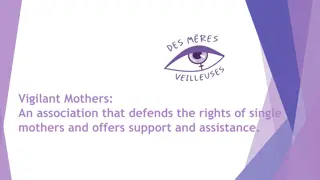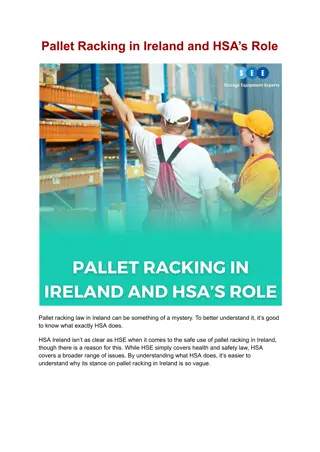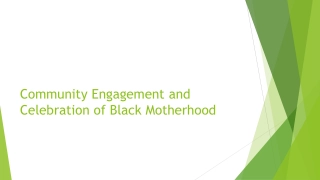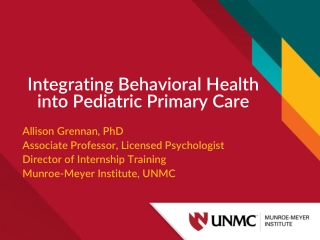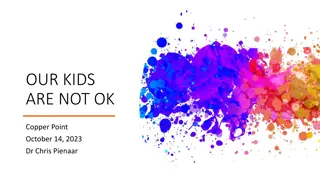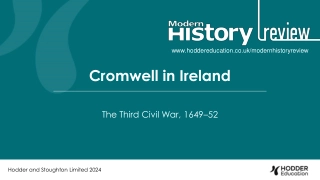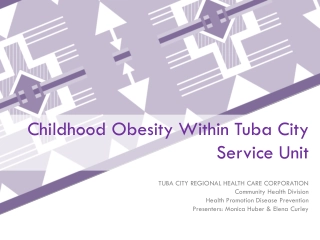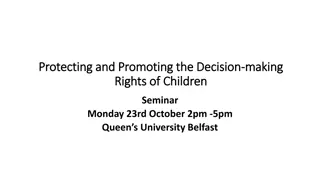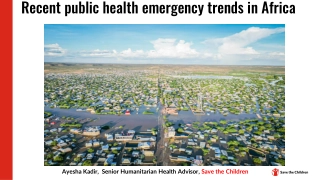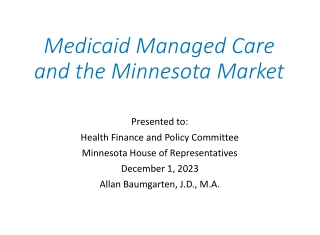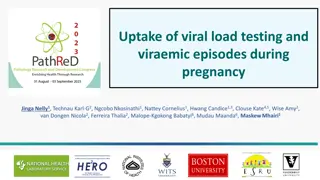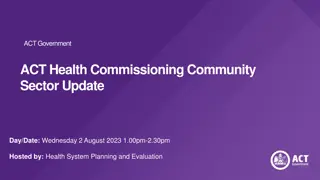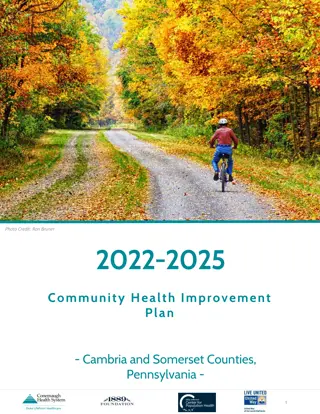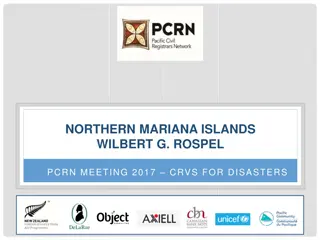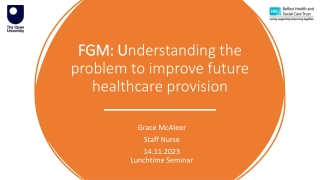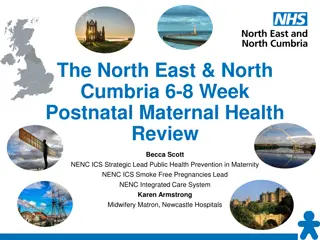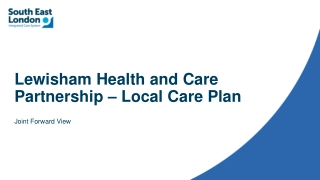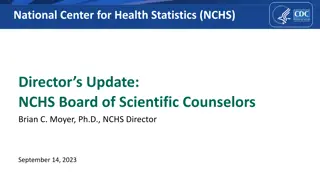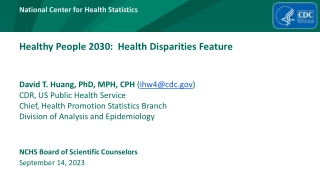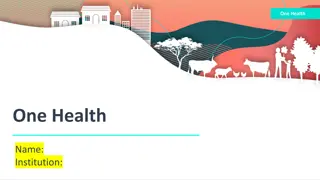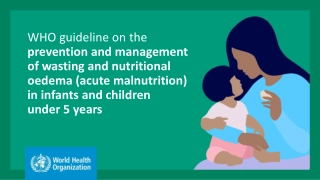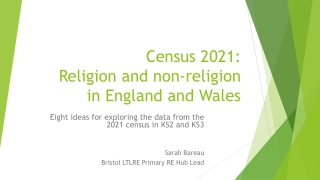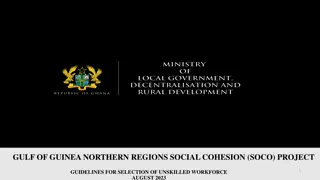Children's and Mothers' Health Trends in Northern Ireland 2021/22
Children's health in Northern Ireland showed various trends in 2021/22, including a high rate of infants born by Caesarean section, percentages of pre-term births, multiple births, infants breastfed, low and high birth weights, and overweight and obese children. Mothers' summary in 2020/21 indicated statistics on births to teenage mums, older mums, fertility rates, women obese at antenatal booking, and overweight mothers. Trends in births in 2021 reflected registered births to NI residents, birth rates, live birth rates, stillbirths, and births to non-NI mothers. Additionally, data on birth trends in Health Trusts and projected births for the next 20 years were analyzed.
Children's and Mothers' Health Trends in Northern Ireland 2021/22
PowerPoint presentation about 'Children's and Mothers' Health Trends in Northern Ireland 2021/22'. This presentation describes the topic on Children's health in Northern Ireland showed various trends in 2021/22, including a high rate of infants born by Caesarean section, percentages of pre-term births, multiple births, infants breastfed, low and high birth weights, and overweight and obese children. Mothers' summary in 2020/21 indicated statistics on births to teenage mums, older mums, fertility rates, women obese at antenatal booking, and overweight mothers. Trends in births in 2021 reflected registered births to NI residents, birth rates, live birth rates, stillbirths, and births to non-NI mothers. Additionally, data on birth trends in Health Trusts and projected births for the next 20 years were analyzed.. Download this presentation absolutely free.
Presentation Transcript
Childrens Health in Northern Ireland Summary 2021/22
COVID-19 Please note that data for 2021/22 will be impacted by the COVID-19 pandemic and should be interpreted with a degree of caution.
Mothers Summary 2010/11: 15.5% 2% of births to teenage mums, 2021/22 Highest live birth rate (11.6) in United Kingdom, 2021 4% of births to older mums (40+), 2021/22 2021/22: 11.3% 2020/21: 15.0% Highest fertility rate across UK (1.81, 2021) Over 1 in 4 women obese at antenatal booking (27%), 2021/22 2010/11: 1.8% Graphics downloaded from: thenounproject.com
Children Summary Almost 36% of infants born by Caesarean Section, 2021/22 5.8% of singleton infants born pre- term (<37 weeks gestation), 2021/22 3% of infants born as a multiple, 2021/22 51.2% of infants breastfed (partial/total), 2021/22 6.1% low birth weight (<2,500g, live infants), 2021/22 14.1% high birth weight ( 4,000g, live infants), 2021/22 Overweight & obese (IOTF), 2021/22: 25% of P1 girls 18% of P1 boys Graphics downloaded from: thenounproject.com
Trends in births 2021: 22,160 registered births to NI residents (total births). Birth rate of 11.6 per 1,000 population (total births). Live birth rate (11.6) is the highest across the four UK countries, but lower than Republic of Ireland (11.7). 89 registered stillbirths. 17.4% of live births to mothers whose country of birth was not NI. Report Tables 1.1 and 1.2 Source: Northern Ireland Statistics and Research Agency, Office for National Statistics (other UK) and Central Statistics Office (RoI) https://www.nisra.gov.uk/statistics/births-deaths-and- marriages/births https://www.ons.gov.uk/peoplepopulationandcommunity/popula tionandmigration/populationestimates/datasets/vitalstatisticspop ulationandhealthreferencetables https://data.cso.ie/
Trends in births Health Trusts 2021: Largest number of registered births recorded to NHSCT residents (5,189), with the lowest number in the WHSCT (3,669). Percentage share of births: BHSCT = 19.6% NHSCT = 23.4% SEHSCT = 17.8% SHSCT = 22.6% WHSCT = 16.6% Report Table 1.2 Source: Northern Ireland Statistics and Research Agency https://www.nisra.gov.uk/statistics/births- deaths-and-marriages/births
Trends - Projected Births In the next 20 years (2021-2041), the number of births is projected to increase in Southern (10%), but decrease in all other Trusts Report Table 1.3 Source: Northern Ireland Statistics and Research Agency https://www.nisra.gov.uk/statistics/births-deaths-and-marriages/births
Trends - Infant Mortality Infant mortality is considered a key indicator of the health of a population. In the last ten years, although fluctuating, mortality rates for children less than one year old in NI, have seen small overall decreases. Risk factors for infant mortality include younger mothers, smoking during pregnancy and not breastfeeding. (Report Sections 3, 6 and 10) Perinatal deaths continue to have the highest rate of death in children aged less than one year (157 deaths in 2021). Source: Northern Ireland Statistics and Research Agency https://www.nisra.gov.uk/statistics/births-deaths-and- marriages Perinatal mortality rate: Number of stillbirths and deaths in the first week of life per 1,000 live and stillbirths per annum. Neonatal mortality rate: Number of deaths in the first four weeks of life per 1,000 live births per annum. Post neonatal mortality rate: Number of deaths after the first four weeks but before the end of the first year per 1,000 live births per annum. Infant mortality rate: Number of deaths in the first year of life per 1,000 live births per annum. Rates include non Northern Ireland residents.
Age of mother 2021/22 Teenage mothers (<20 years): Number of births to teenage mothers in 2021/22 = 449 2.1% of all births were to teenage mothers. 3.7% of births in the most deprived areas, 0.8% in the least deprived areas (NIMDM 2017). Older mothers (aged 40+): Overall % births increasing since 2018/19 (% births in 2021/22 = 4.6%). 3.4% in the most deprived areas, 6.2% in the least deprived areas (NIMDM 2017). Report Table 3.1 Source: Child Health System Source: Northern Ireland Statistics and Research Agency, NI Multiple Deprivation Measure 2017 https://www.nisra.gov.uk/statistics/deprivation/northern- ireland-multiple-deprivation-measure-2017-nimdm2017
Multiple Births 2021/22: The proportion of infants born as part of a multiple birth pregnancy increased with mother s age (0.9% of those aged under 20 years who gave birth in 2021/22, compared to 3.8% of those aged 40+ years) There was little difference in the proportion of infants born as a multiple when considering ethnic group of mother, Trust of residence of mother or deprivation status (NIMDM 2017). Report Table 4.2 Source: Child Health System Source: Northern Ireland Statistics and Research Agency, NI Multiple Deprivation Measure 2017 https://www.nisra.gov.uk/statistics/deprivation/northern -ireland-multiple-deprivation-measure-2017-nimdm2017
Infant Gestation - Booking 2021/22: The proportion of infants born to mothers booking at 15 or more weeks varies by age of mother, with younger mothers less likely to book for antenatal care before 15 weeks gestation. There are substantial differences in the timescales of when mothers book by ethnic group. Report Table 5.2 Source: NI Maternity System Source: Northern Ireland Statistics and Research Agency, NI Multiple Deprivation Measure 2017 https://www.nisra.gov.uk/statistics/deprivation/northern-ireland-multiple-deprivation-measure-2017-nimdm2017
Infant Gestation - Delivery 2021/22: A higher proportion of infants born still or as part of a multiple birth born pre-term. Slight differences by age of mother slightly higher proportion of infants born pre-term to older mothers (40+ year) than to younger mothers. Report Table 5.4 Source: NI Maternity System Source: Northern Ireland Statistics and Research Agency, NI Multiple Deprivation Measure 2017 https://www.nisra.gov.uk/statistics/deprivation/northern-ireland-multiple-deprivation-measure-2017-nimdm2017
Maternal risk factors In 2021/22, 11.3% of mothers smoked (2010/11 = 15.5%) In 2021/22, 4.8% had pregnancy induced hypertension (2010/11 = 4.5%) In 2020/21, 15.0% of mothers had diabetes (2010/11 = 1.8%) Note: increase may be due in part to improved recording of diabetes on NIMATS/CHS Report Table 6.1 Source: Child Health System (2010/11 - 2016/17), NI Maternity System (2017/18 onwards) DIABETES - due to data validation issues, it is not possible to provide data for mothers with diabetes who gave birth during 2021/22, therefore only data up to 2020/21 has been provided
Maternal risk factors - Smoking 2021/22: % mothers who smoked at booking decreased with age: 31.1% of those aged <20 years, 8.7% of those aged 40+. A smaller proportion of first time mothers smoked (9.1%), compared to those who were pregnant before (12.2%). Almost 15% of mothers in Belfast Health and Social Care Trust area smoked, compared to 10% in South Eastern HSCT and Southern HSCT (NI=11.3%). In the most deprived areas (NIMDM 2017), 21.4% of mothers smoked, compared to 4.1% in the least deprived areas. Report Table 6.2 Source: NI Maternity System Source: NISRA, NI Multiple Deprivation Measure 2017 https://www.nisra.gov.uk/statistics/deprivation/northern-ireland-multiple-deprivation-measure-2017-nimdm2017
Maternal risk factors - Diabetes 2020/21: % mothers with diabetes increased with age 6.5% of those aged less than 20 years, rising to 20.7% of those aged 40+. (All mothers = 15.0%). Only slight variation by deprivation quintile (NIMDM 2017). Report Table 6.3, 2020/21 report: https://www.publichealth.hscni.net/directorates/oper ations/statistics Source: NI Maternity System Source: Northern Ireland Statistics and Research Agency, NI Multiple Deprivation Measure 2017 https://www.nisra.gov.uk/statistics/deprivation/north ern-ireland-multiple-deprivation-measure-2017- nimdm2017
Maternal Body Mass Index (BMI) 2021/22 (at antenatal booking appointment): 58% of mothers giving birth measured as pre-obese or obese. 31% pre-obese, 27% obese. % obese has increased year on year since 2011/12 (18.5%). 31% of mothers from most deprived areas (NIMDM 2017) were classified as obese, compared to 21% from least deprived areas. Report Tables 7.1 and 7.2 Source: NI Maternity System Source: Northern Ireland Statistics and Research Agency, NI Multiple Deprivation Measure 2017 https://www.nisra.gov.uk/statistics/deprivation/northern-ireland-multiple-deprivation-measure-2017-nimdm2017
Maternal Body Mass Index (BMI) 2017/18 2021/22: Figures show that a larger proportion of women (who booked at 14 weeks gestation) with a higher BMI, were more likely to have a larger baby, or deliver by Caesarean Section. A higher proportion of women who smoke were more likely to be underweight. Report Table 7.4 Source: NI Maternity System
Method of Delivery 2021/22: 35.7% of infants born by Caesarean Section (CS), 52.5% had a normal delivery, 11.8% had another type of delivery e.g. breech, forceps. Daisy Hill Hospital continues to have the highest % CS (47.9%). 2021/22: Proportion of infants born by CS increased with age of mother, from 20.6% of those under 20 years old, to 51.8% of those aged 40+ years. Report Table 8.2 Source: NI Maternity System Source: Northern Ireland Statistics and Research Agency, NI Multiple Deprivation Measure 2017 https://www.nisra.gov.uk/statistics/deprivation/northern- ireland-multiple-deprivation-measure-2017-nimdm2017
Infant Birth Weight 2021/22: 6.4% of all births were of a low birth weight (6.1% live, 69.2% still). % low birth weight slightly higher in those mothers aged over 40 (9.7%). (Note that this age group has a higher proportion of multiple births). 14.1% of live infants were born with a higher birth weight (4,000g+) and of these, 1.8% with a birth weight of 4,500g+. Mothers from a white ethnic group were more likely to have a baby born with a high birth weight (4,000g+) (14.5%). Non- white = 5.5%. Report Tables 9.1 and 9.2 Source: Child Health System and NI Maternity System
Breastfeeding (total/partial) at discharge 2021/22: 51.2% of live infants breastfed at discharge. Increases with age of mother: aged <20 = 25.5%, 40+ = 63.0%. Much higher rates in infants born to mothers whose ethnic origin was not white . By Council area, % breastfed ranges from 40.9% in Derry City & Strabane to 63.3% in Lisburn & Castlereagh. Markedly lower in more deprived areas (36.7%). Least deprived = 66.8%. Report Table 10.2 Source: Child Health System and NI Maternity System Source: Northern Ireland Statistics and Research Agency, NI Multiple Deprivation Measure 2017 https://www.nisra.gov.uk/statistics/deprivation/northern-ireland-multiple-deprivation-measure-2017-nimdm2017
Body Mass Index Primary 1 2021/22 (IOTF): Higher proportion of girls were overweight/obese (25.4%) compared to boys (18.1%). All children = 21.7%. Derry City and Strabane LGD had the highest proportion of children overweight/obese = 25.5%. 26.1% of children living in the most deprived areas were overweight/obese, compared to 17.9% of children from the least deprived areas. Report Table 12.2 Source: Child Health System Source: Northern Ireland Statistics and Research Agency, NI Multiple Deprivation Measure 2017 https://www.nisra.gov.uk/statistics/deprivati on/northern-ireland-multiple-deprivation- measure-2017-nimdm2017
Body Mass Index Year 8 2018/19 (IOTF): NOTE THAT DATA DOES NOT INCLUDE CHILDREN FROM WHSCT AREA AS MEASUREMENTS WERE NOT TAKEN IN 2018/19. 27.2% of children measured as overweight/obese. Little difference in the proportion overweight/obese between the two genders (27.5% male, 26.8% female). Larger proportion of children from more deprived areas were measured as overweight/obese (33.7%), compared to those living in the least deprived areas (21.9%). Report Table 12.5 Source: Child Health System Source: Northern Ireland Statistics and Research Agency, NI Multiple Deprivation Measure 2017 https://www.nisra.gov.uk/statistics/deprivation/ northern-ireland-multiple-deprivation-measure- 2017-nimdm2017
Childrens Health in Northern Ireland Produced by Public Health Agency Health Intelligence Unit www.publichealth.hscni.net 26 May 2023


